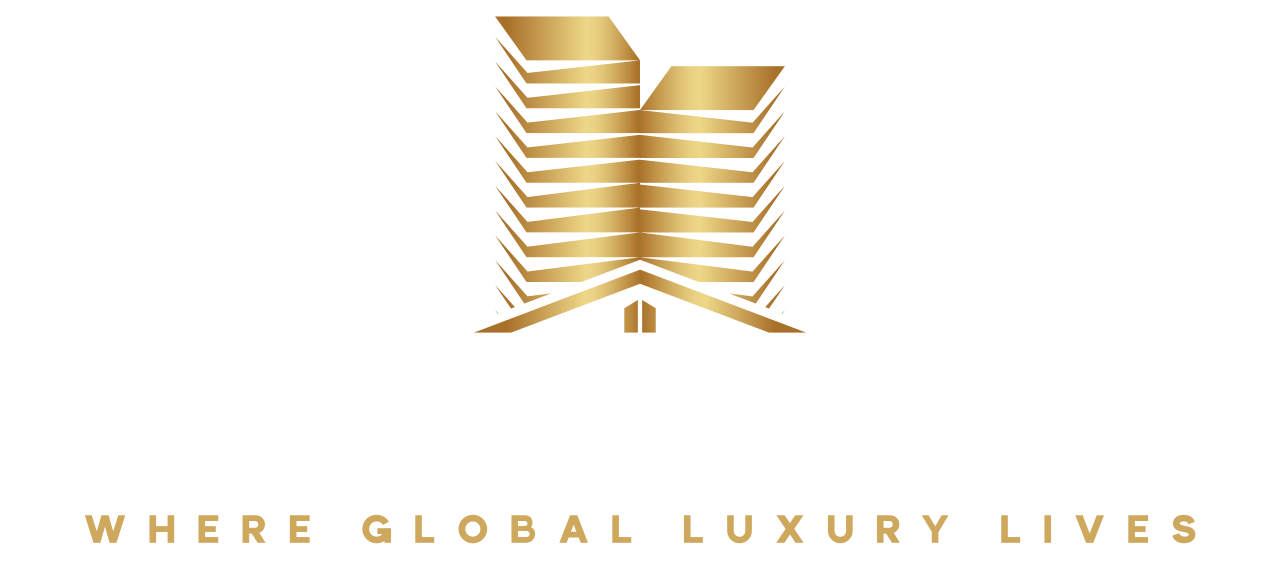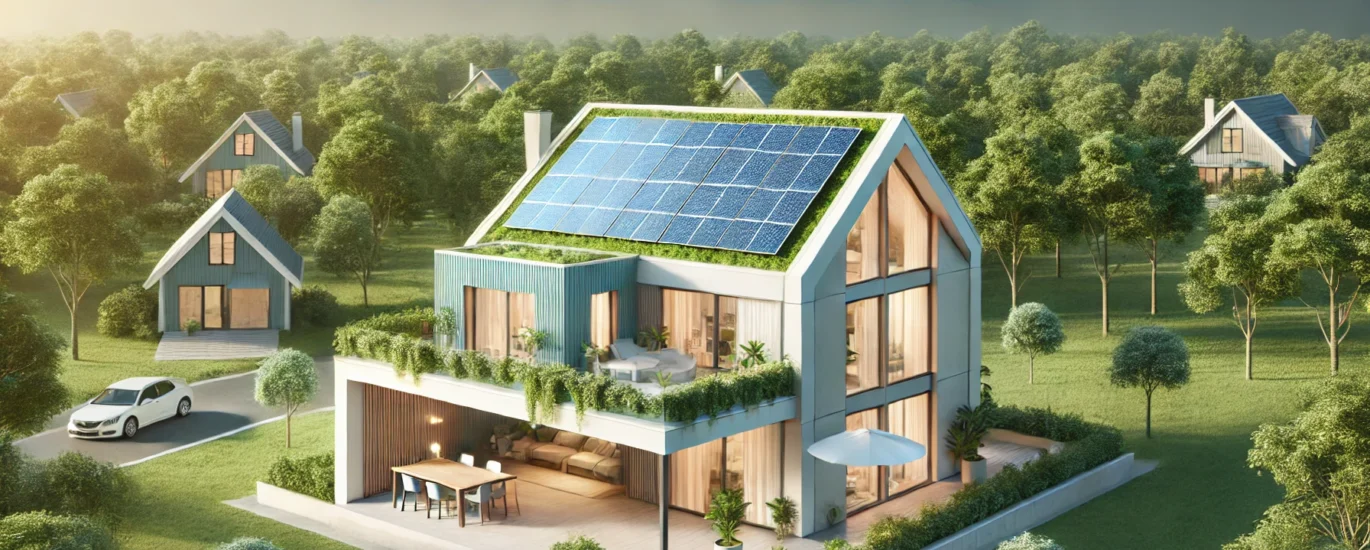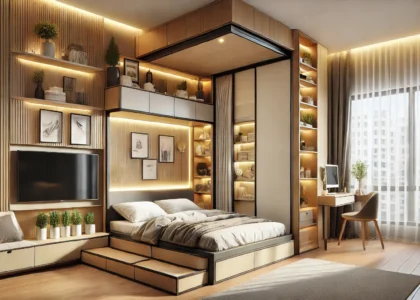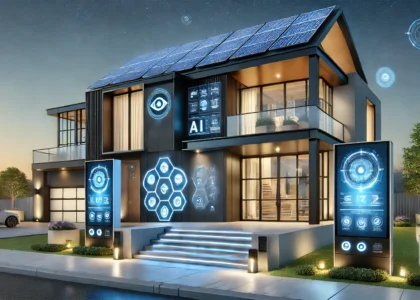Sustainable Homes: Why Green Living Is the Next Big Thing in Real Estate
Introduction
Sustainable homes are revolutionising the property market, offering a perfect combination of cutting-edge innovation and environmental consciousness. Designed to minimise their impact on the planet, these homes have become a top choice for environmentally-aware buyers and developers alike.
Why the shift? Climate change is no longer just a distant concern; it’s shaping the way we live. Today’s sustainable homes incorporate renewable energy systems, smart technologies, and water-saving designs, all while maintaining the elegance expected in luxury properties. Green living isn’t just a trend—it’s the future of real estate.
The Rise of Sustainable Homes
The demand for eco-friendly homes is growing rapidly. With the impacts of climate change becoming increasingly visible, more buyers are prioritising properties that align with their values. Research shows that homeowners, especially in the luxury market, are actively seeking homes with sustainable features.
Real estate developers are rising to the challenge, integrating green construction practices and prioritising energy-efficient designs. By doing so, they’re not only supporting environmental goals but also adding significant value to their properties. Buyers gain eco-conscious living spaces, and developers gain a competitive edge—everyone wins.
Key Features of Sustainable Homes
Renewable Energy Sources
Renewable energy systems such as solar panels, wind turbines, and geothermal heating are staples in sustainable homes. These systems help reduce dependence on fossil fuels while cutting energy bills. Geothermal heating, for example, uses the Earth’s natural warmth to regulate indoor temperatures, offering a clean, efficient alternative to traditional systems.
Smart Home Technologies
Smart technologies are at the heart of modern eco-friendly homes. Features such as automated lighting, intelligent climate control, and energy monitoring allow homeowners to optimise their resource usage. With smart home systems, you can control your energy consumption from your phone, no matter where you are.
Sustainable Building Materials
Eco-conscious materials like bamboo, reclaimed wood, and recycled steel are transforming home construction. Not only are these materials better for the planet, but they also bring a unique and stylish aesthetic. Durable and sustainable, they’re a practical choice for long-term living.
Water-Saving Systems
Sustainable homes often include water-saving features such as rainwater harvesting, greywater recycling, and low-flow fixtures. These systems drastically reduce water wastage, making eco-friendly living possible even in water-scarce regions.
Benefits of Green Living
Environmental Benefits
Sustainable homes are designed to reduce energy use, water waste, and greenhouse gas emissions. By using renewable resources and promoting waste reduction, they help preserve the planet for future generations.
Financial Benefits
Although eco-friendly homes often require a larger upfront investment, they offer significant savings in the long term. Solar panels, energy-efficient appliances, and water-saving systems dramatically lower utility bills. Additionally, sustainable homes tend to appreciate in value faster than traditional properties, making them a wise investment.
Health Benefits
Living in a sustainable home also has health perks. Non-toxic building materials and superior ventilation systems improve indoor air quality, while natural lighting enhances well-being. For families and individuals, these features make green living a healthier, more comfortable choice.
Green Building Certifications
Certifications are key to identifying truly sustainable properties. They confirm that a home meets strict environmental and energy efficiency standards.
- LEED (Leadership in Energy and Environmental Design): A global certification that evaluates sustainability across multiple aspects, from materials to energy use.
- Passive House Standards: These focus on creating ultra-energy-efficient buildings with airtight designs to minimise energy loss.
- Energy Star: Recognised for certifying homes and appliances that meet energy efficiency criteria.
For developers, earning these certifications adds credibility and boosts property value. For buyers, they provide reassurance that the home is genuinely eco-friendly.
The Intersection of Luxury and Sustainability
Eco-Friendly Luxury Homes
Luxury homes and sustainability are no longer separate ideas. Today’s high-end properties often feature cutting-edge eco-friendly technologies, such as solar panels, smart automation systems, and water recycling. Some even go beyond, incorporating living walls, green roofs, and indoor gardens to blend luxury with environmental stewardship.
Redefining Upscale Living
The concept of luxury is evolving. Sustainable luxury homes represent a lifestyle shift—one where elegance meets responsibility. They provide not just opulence but also a deep connection to the environment, offering an entirely new standard for upscale living.
International Demand for Eco-Friendly Homes
Global Interest in Sustainable Living
Countries like Germany, Sweden, and Canada are leading the way in sustainable housing, thanks to supportive government policies and green incentives. In the UK, eco-friendly homes are becoming increasingly sought after as buyers prioritise sustainability.
Status Symbol and Sustainability
For affluent buyers in global hubs like London, Dubai, and New York, owning a sustainable luxury property is more than just practical—it’s a statement. These homes showcase innovation, design, and a commitment to reducing environmental impact.
Challenges in Developing Sustainable Homes
Despite their growing popularity, sustainable homes face several challenges:
- Higher Construction Costs: Sustainable materials and technologies can drive up building costs.
- Limited Material Availability: High-quality eco-friendly materials like reclaimed wood or recycled steel are not always easily accessible.
- Certification Complexities: Meeting certification standards can be time-intensive and require significant expertise.
However, as technologies advance and sustainable options become more widely available, these challenges are gradually being addressed.
Role of Technology in Green Living
Technology is playing a crucial role in making sustainable homes practical and appealing.
- Smart Home Systems: Automated systems optimise resource usage, from lighting to heating, reducing waste and costs.
- Innovations in Renewable Energy: Solar energy and battery storage technologies are becoming more efficient and accessible.
- Geothermal Systems: These provide eco-friendly heating and cooling, reducing energy consumption significantly.
By integrating these technologies, green homes offer comfort, efficiency, and sustainability.
Investment Opportunities in Sustainable Real Estate
Growing Demand for Green Homes
Eco-friendly homes are increasingly seen as a lucrative investment. As the demand for sustainable properties rises, their long-term appreciation potential becomes even more attractive.
Market Appeal for Developers
Developers who prioritise sustainability are well-positioned to tap into this growing market. Green features and certifications add value, ensuring properties stand out in competitive markets.
Sustainable Communities and Neighbourhoods
Examples of Eco-Friendly Neighbourhoods
- Masdar City (UAE): A zero-carbon city that integrates renewable energy and sustainable transport.
- Vauban (Germany): A car-free neighbourhood emphasising solar energy and walkable design.
- Babcock Ranch (Florida): A solar-powered town with a focus on conservation and community living.
Benefits of Sustainable Community Living
Residents enjoy reduced utility costs, shared green spaces, and better air quality. These neighbourhoods promote a sense of community while supporting a low-carbon lifestyle.
Urban Planning’s Role in Sustainability
Good urban planning ensures sustainable communities can maximise environmental benefits while maintaining convenience and quality of life.
Marketing Green Luxury Homes
Highlighting Eco-Friendly Features
When marketing sustainable homes, it’s vital to showcase their standout features—such as renewable energy systems, certifications, and smart technologies.
Leveraging SEO for Visibility
Optimise listings with targeted keywords like “luxury green homes” or “sustainable properties for sale.” Including specific terms like “energy-efficient homes in London” can attract more relevant audiences.
Storytelling for Emotional Impact
Tell the story of the home’s eco-friendly journey—from its construction to the benefits it offers. Emotional storytelling connects with buyers on a personal level.
Case Studies of Sustainable Luxury Homes
California’s Zero-Energy Villas
Sleek and innovative, these villas combine modern design with renewable energy systems, including solar panels and passive cooling.
Scandinavian Smart Homes
Minimalist in style, these homes utilise sustainable timber, green roofs, and geothermal heating for ultimate efficiency.
Dubai’s Sustainable City
This urban development features luxury homes that generate energy, recycle water, and promote eco-friendly transport.
The Future of Sustainable Real Estate
The future of property development is undeniably green. Predictions include:
- Technology Innovations: Continued advancements in renewable energy, smart systems, and materials.
- Mainstream Appeal: Sustainable features will become a standard expectation in all home types.
- Customisation Options: Buyers will have more flexibility to tailor eco-friendly features to their preferences.
Conclusion
Sustainable homes are transforming the real estate market, offering stylish and eco-conscious living spaces. For buyers, they provide comfort and savings, while for developers and investors, they represent a profitable opportunity.
By embracing green living, we’re not just reshaping property markets—we’re creating a healthier, more sustainable planet.
FAQs
- What makes a home sustainable?
Features such as energy-efficient systems, renewable energy, and sustainable materials contribute to a home’s eco-friendliness. - Are luxury sustainable homes worth the investment?
Yes, they offer long-term savings, better resale value, and a healthier lifestyle. - How do green homes benefit the environment?
They lower energy consumption, minimise waste, and reduce carbon emissions. - What certifications should I look for?
LEED, Passive House, and Energy Star certifications are reliable indicators of sustainability. - How can I market my luxury sustainable property?
Focus on its eco-friendly features, use SEO strategies, and tell a compelling story about its benefits.





